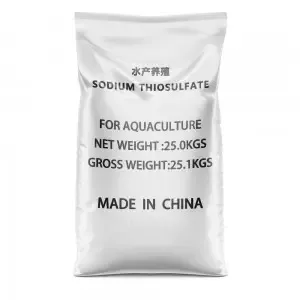



lead ii nitrate safety data sheet
Safety Data Sheet for Lead II Nitrate An Overview
Introduction
Lead II Nitrate (Pb(NO3)2) is a white crystalline compound that plays a significant role in various industrial applications, including the manufacture of lead compounds, pigments, and as a reagent in chemical synthesis. Despite its utility, Lead II Nitrate presents notable health and environmental hazards, leading to the necessity for a comprehensive Safety Data Sheet (SDS) that informs users of its properties, risks, and safety measures.
Chemical Identification
Lead II Nitrate appears as colorless to white crystals or powder and is soluble in water, making it easily dispersible. The compound is often encountered in laboratories and manufacturing settings, necessitating proper labeling and handling instructions to mitigate risks associated with its use.
Hazard Identification
The hazards associated with Lead II Nitrate can be categorized into health hazards and environmental hazards.
1. Health Hazards - Lead II Nitrate is classified as a toxic compound. Exposure can occur through inhalation, skin contact, or ingestion, leading to lead poisoning. Symptoms may include abdominal pain, constipation, fatigue, headaches, and in severe cases, damage to the nervous system, kidneys, and reproductive organs. - Chronic exposure may result in cumulative lead toxicity, particularly in vulnerable populations such as children and pregnant women.
2. Environmental Hazards - Lead is a heavy metal that can persist in the environment, posing risks to aquatic life and ecosystems when released improperly. Lead II Nitrate may contaminate soil and water bodies, leading to ecological imbalances.
Composition and Information on Ingredients
Lead II Nitrate is composed of lead (Pb) ions and nitrate (NO3) ions
. The chemical formula is Pb(NO3)2, with a molecular weight of 331.2 g/mol. It is essential for handlers to be aware of its chemical makeup for proper risk assessment and response planning.First Aid Measures
In the event of exposure, prompt first aid is critical
lead ii nitrate safety data sheet

- Inhalation If inhaled, move the affected person to fresh air immediately. Seek medical attention if symptoms such as coughing or difficulty breathing occur. - Skin Contact Remove contaminated clothing and rinse the affected skin with plenty of water for at least 15 minutes. Seek medical attention if irritation or redness persists. - Eye Contact Rinse the eyes with water for at least 15 minutes, ensuring that the eyelids are held open. Seek medical assistance immediately.
- Ingestion Do not induce vomiting. Rinse the mouth with water and seek medical attention at once.
Firefighting Measures
Lead II Nitrate is not flammable; however, it can decompose under high temperatures, releasing toxic fumes. In case of a fire involving Lead II Nitrate, firefighters should use appropriate extinguishing media suitable for the surrounding materials, and they should wear protective gear, including self-contained breathing apparatus (SCBA).
Accidental Release Measures
In the event of a spill or accidental release, it is essential to act quickly to contain the material. Evacuate the area and ensure proper ventilation. Wearing appropriate personal protective equipment (PPE), including gloves and respirators, contains the spill using inert materials such as sand or earth and cautiously place them into containers for proper disposal. Avoid releasing the chemical into the environment.
Handling and Storage
When handling Lead II Nitrate, always adhere to established safety protocols
- Use in a well-ventilated area. - Employ safety equipment such as gloves, goggles, and lab coats. - Store in a cool, dry place, away from incompatible substances such as strong reducing agents. - Ensure that containers are tightly sealed, labeled appropriately, and stored away from children and unauthorized personnel.
Disposal Considerations
Lead II Nitrate and its waste products constitute hazardous waste. Disposal should be carried out in accordance with local, state, and federal regulations regarding hazardous waste management. It is advisable to consult with waste disposal professionals who can ensure safe and compliant disposal practices.
Conclusion
Lead II Nitrate is a useful chemical with significant health and environmental risks. Understanding its properties, hazards, and safe handling practices detailed in the Safety Data Sheet can mitigate potential risks associated with its use. Proper education and adherence to safety measures are paramount for all personnel working with or around this compound to ensure a safe working environment.
-
Why Sodium Persulfate Is Everywhere NowNewsJul.07,2025
-
Why Polyacrylamide Is in High DemandNewsJul.07,2025
-
Understanding Paint Chemicals and Their ApplicationsNewsJul.07,2025
-
Smart Use Of Mining ChemicalsNewsJul.07,2025
-
Practical Uses of Potassium MonopersulfateNewsJul.07,2025
-
Agrochemicals In Real FarmingNewsJul.07,2025
-
Sodium Chlorite Hot UsesNewsJul.01,2025










